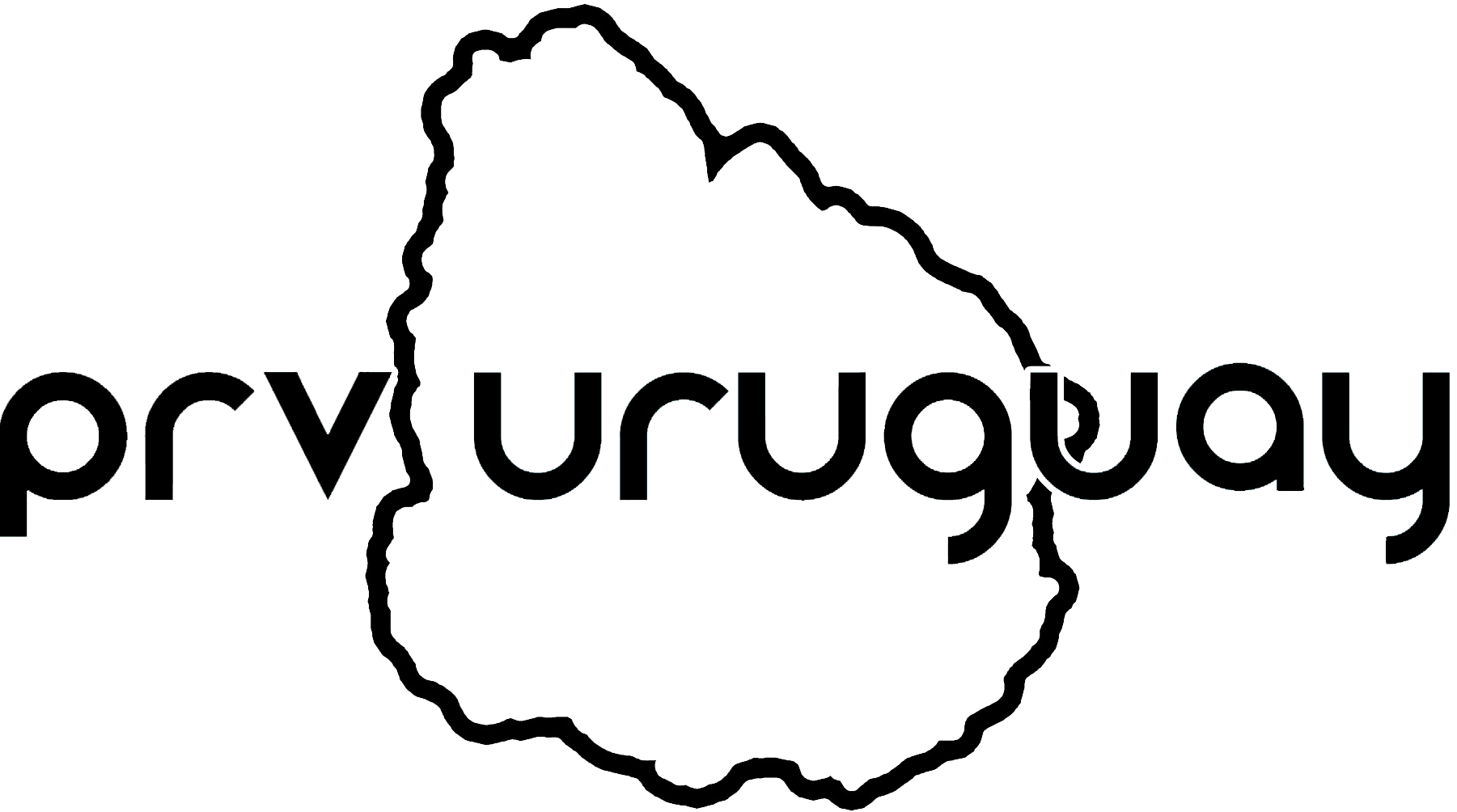When planning a livestock production system, one of the unknowns (increasingly) tends to be water. In recent years, the producer has been leaving behind old customs, such as taking the animals to streams and ravines, changing their way of thinking, for example, subdividing paddocks and incorporating a water network with drinkers that allows a better distribution of water.
As far as rational grazing is concerned, two “schools” are known: Water in the paddock and water in social areas. Regardless of each of these, it is necessary to take into account some concepts to obtain an optimal water system, which allows access to water in the quantity and quality that the animal needs.
A continuación se presentan algunos conceptos básicos para considerar a la hora de diseñar un sistema de distribución de agua.
1. Comprehensive design.
To avoid future complications, it is advisable to design the system considering the entire property, even if it is later carried out in stages. That is, consider possible places to take the water in the future, a possible increase in the load, contemplating agricultural areas that will later enter the pasture phase, etc.
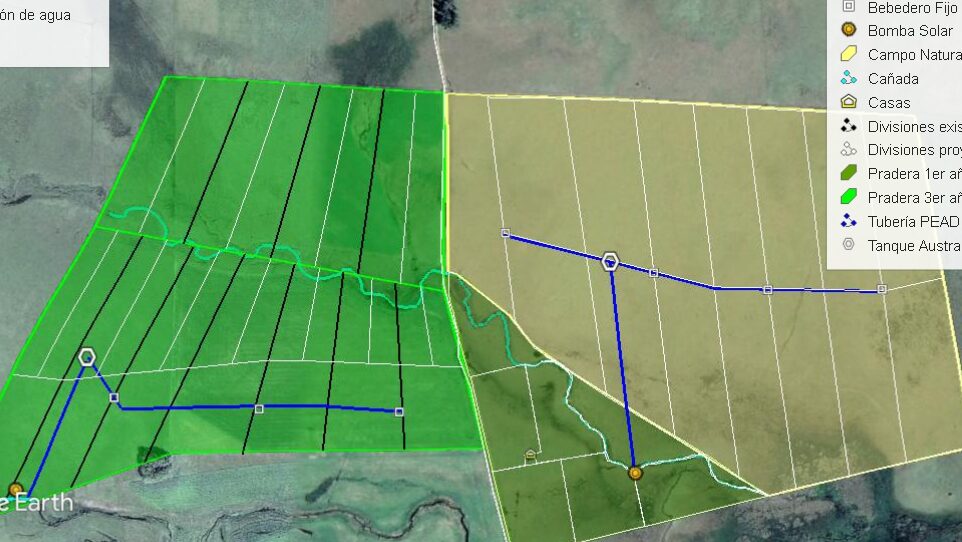
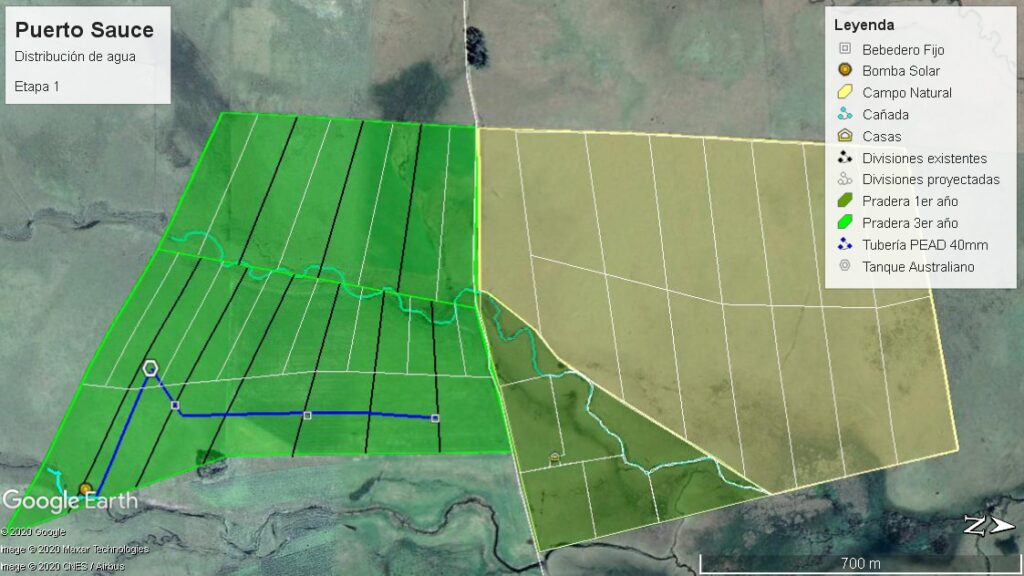
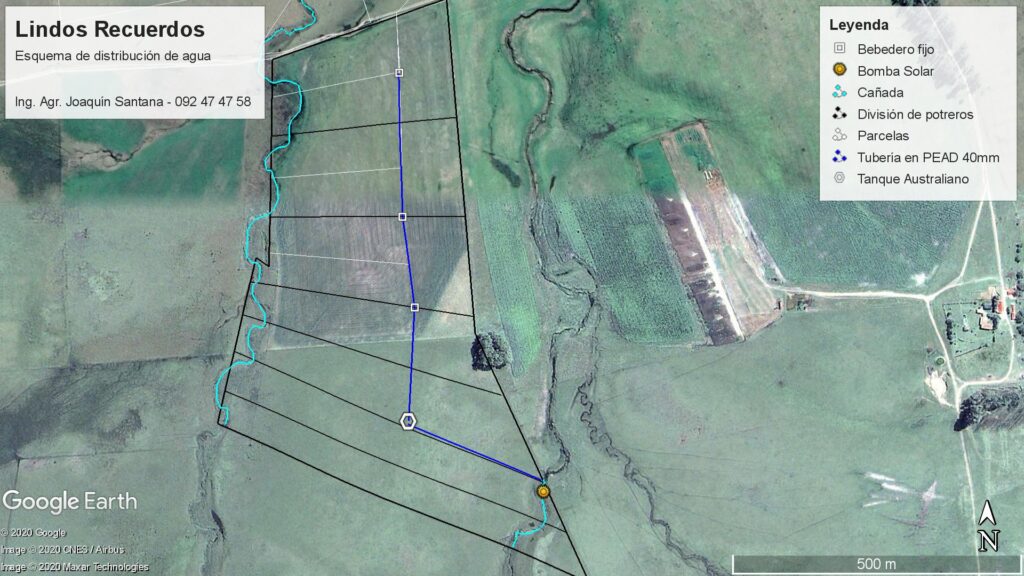
Emphasizing the above, it will be avoided to undersize the components of the network (pipes, pump, drinkers) that would be expensive to rebuild in the future.
2. How much water does an animal consume?
Over time, it was found that the amount of water that an animal consumes daily is often underestimated. From PRV Uruguay, for the design of water networks we estimate that adult animals of meat breeds consume between 50 to 70 liters / day.

Knowing this information will allow you to correctly calculate the size of the water tank to reserve the amount of water that the rodeo requires for at least two days. In the event that the pump breaks, there is a power outage or two or three cloudy days, the system will have the autonomy that has been granted through the sizing of the reserve.
3. Design flow
According to various publications of the Agricultural Plan Institute, to design the water network we must calculate between 6 and 7 liters per hour per animal. In other words, if we have a herd of 350 animals, the minimum flow rate that the drinker should replenish will be approximately 2,500 l/h (350 x 7). Based on this, the diameter of the pipe will then be dimensioned and in this way possible breakages due to agglomeration of animals will be avoided.
4. Water reserve and its location
In order for the system to work economically, the water tank or reservoir will be located in a high area of the property, which ensures that the water will reach all consumption points by gravity, without the need to resort to a pump. It is usually observed that the Australian tanks are in low places, next to mills, preventing the water from reaching certain places due to unevenness.
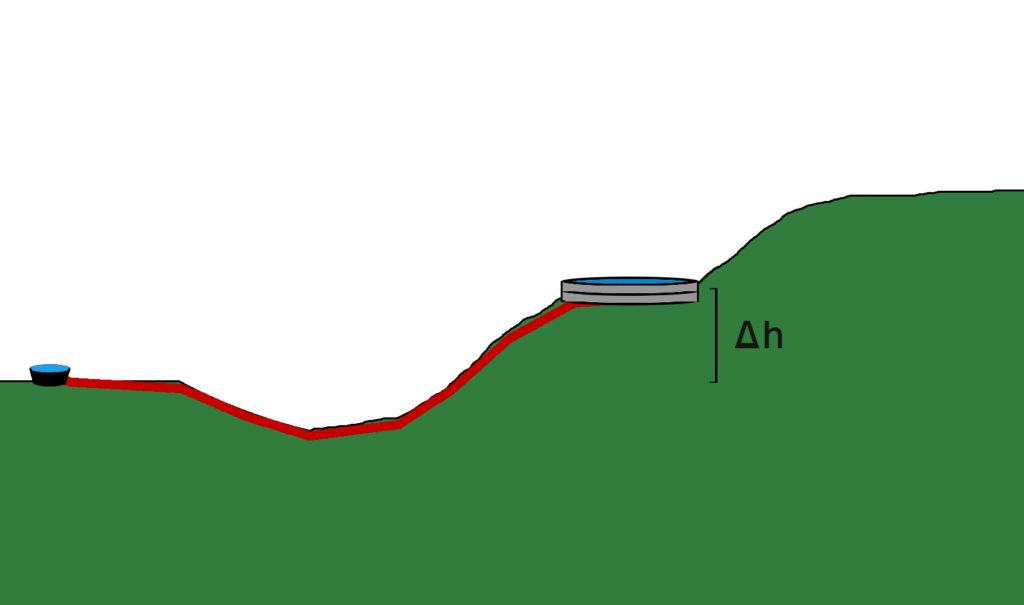
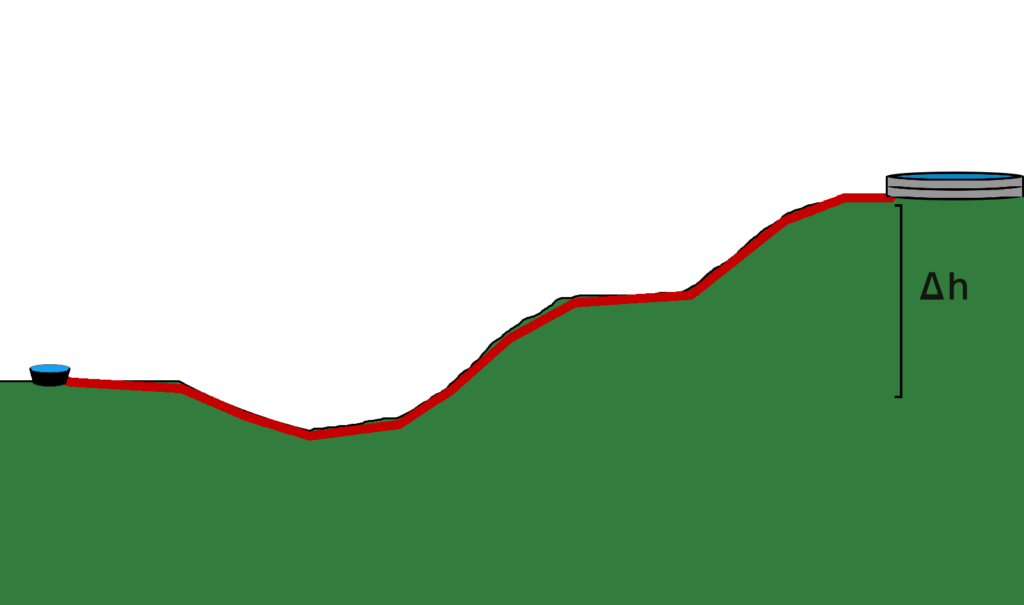
Regarding the variety of deposit, depending on the volume that is needed, we find two options: Closed tanks or Sheet metal tanks.
Those corresponding to the first group are generally made of plastic material (PEAD), and their volume reaches 12,000 liters. While those made of sheet metal from 20,000 liters become a better alternative in relation to HDPE tanks, being able to install them easily thanks to the existence of the canvas that covers their interior. This implement makes it possible to avoid the civil works that require the ironing of the tank and ensures that there are no leaks due to the union between the plates.
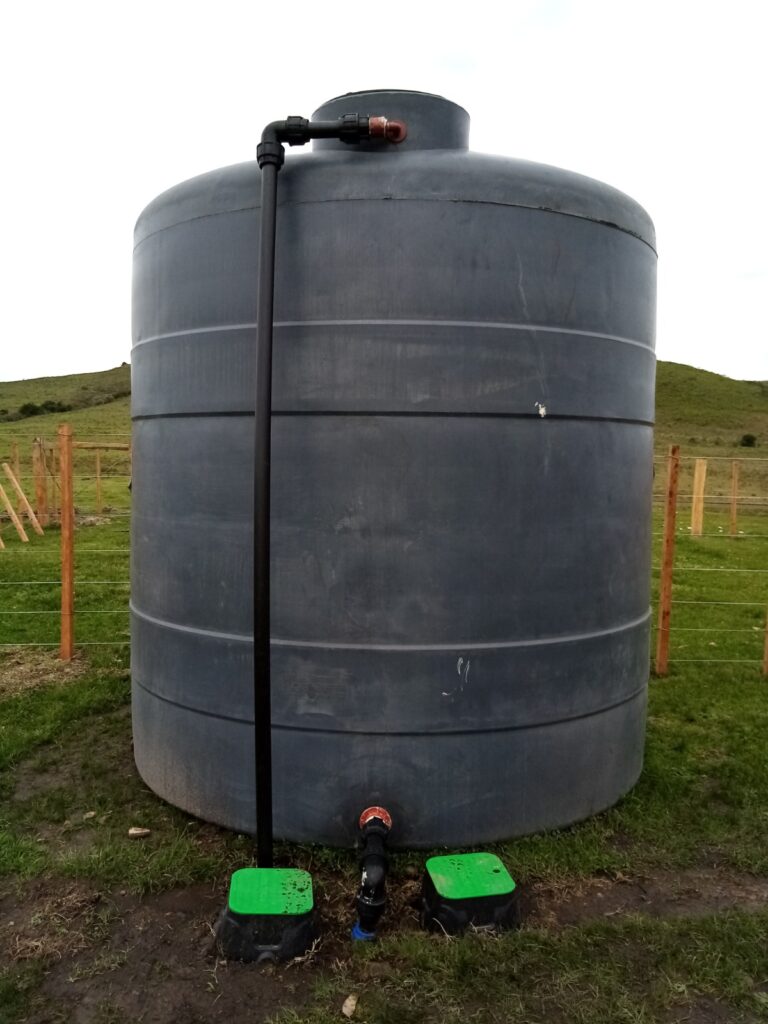
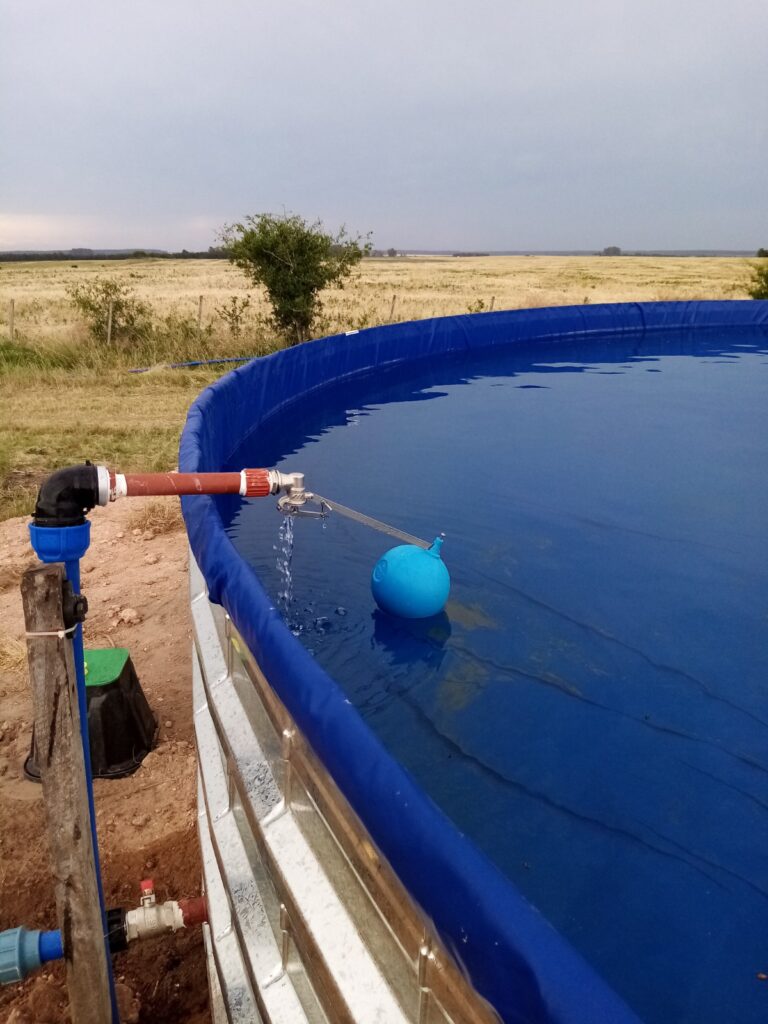
5. Cutwaters or dams
Dams are characterized by storing rainwater from the basin. One of the advantages that these have over tanks is that they allow you to store a large amount of it. On the other hand, these are usually located in low places and are often not used as they should be, allowing the entry of animals that contaminate it with feces and urine.
However, if used properly they can be a very economical source for the grower. If the dam is located in an area where the basin captures enough water to place it at a high point, the distribution of this resource will have a very low cost.


6. The pipeline
The pipe is one of the most important points in the hydraulic system. It is one of the most expensive components but, in turn, a correct dimensioning will ensure that the necessary water arrives considering the optimal size of the pipes.
As an example, the price difference between the 50mm pipe and the 63mm pipe is US$0.66 per meter. Assuming that the project contemplates a line of 1000 meters, an oversizing error in the pipe could cost US$ 660.
7. Buried... Yes or no?

Another point to highlight is the buried pipe. This practice is beneficial but can represent a cost that can be dispensed with. The ideal is the buried pipe, but sometimes for economic reasons, this alternative makes the system more expensive. Installing it on the surface makes it possible to reduce the price of US$0.5 per meter (0.8 to 0.3 USD/mt), that is, in the same line as the previous example, 500 dollars would be saved and, as an additional advantage, it facilitates the detection of leaks.
On the other hand, over time the pipe exposed to heat and cold decreases its useful life. In turn, the heating of the water in the summer directly affects the system, causing the animals to reduce their water consumption. For this, there are theories that ensure that when the grass grows, it covers the pipe but from PRV Uruguay it has not yet been proven.
8. Drinking fountains
Another key component is the choice of drinker. There is a great variety but we can group them into two categories: Fixed and portable drinkers.


The first group refers to the fact that, when the drinking fountains are fixed, they are generally made of concrete or sometimes of sheet metal, located at strategic points on the property, such as social areas or alleys. In addition, there is the possibility that these are in the paddock or on the vertices every 4 plots, thus allowing permanent access to the water for the animals. They are recommended for subdivisions of 10 hectares and up and due to their greater capacity they allow a slight reduction in the design flow.
The second group is usually made of a lighter material than the previous ones, and may be plastic (HDPE), sheet metal or fiberglass. This alternative adapts very well to systems with small and very intensive plots. If this option is chosen, hydrants must be placed to which the drinker can be connected, which will rotate in the same way as the cattle.
Regardless of the system chosen when installing them, there are "rules" to follow if you intend to increase their duration in a rational grazing system:
- The drinker must be circular. This makes it easier for animals to enter, preventing them from obstructing access to others.
- The entrance to the drinker must be well protected from trampling. In addition, it is recommended that this be located below, thus preventing animals from hooking it with the antlers, causing water losses and breakage of drinkers. There are several alternatives to protect the entrance, such as grilles, cameras, among others. If you choose portable drinkers, there are options in which the entrance is below the drinker and through the center.
- The flow that reaches the drinker is more important than its volume. If the flow that arrives is not enough, breakages in the float can occur and loss of the water reserve.
9. Float valve
The float valve must allow the flow of water for which the system was designed. Sometimes the float is of a very small diameter and does not allow the passage of the flow, limiting the filling of the drinker. This can cause the animal to search for water with its snout and break the tap, causing leaks and breaks in the network.
A valid option for systems that work by gravity is the Apex AP20/25 faucet since it adapts to low and high pressure.
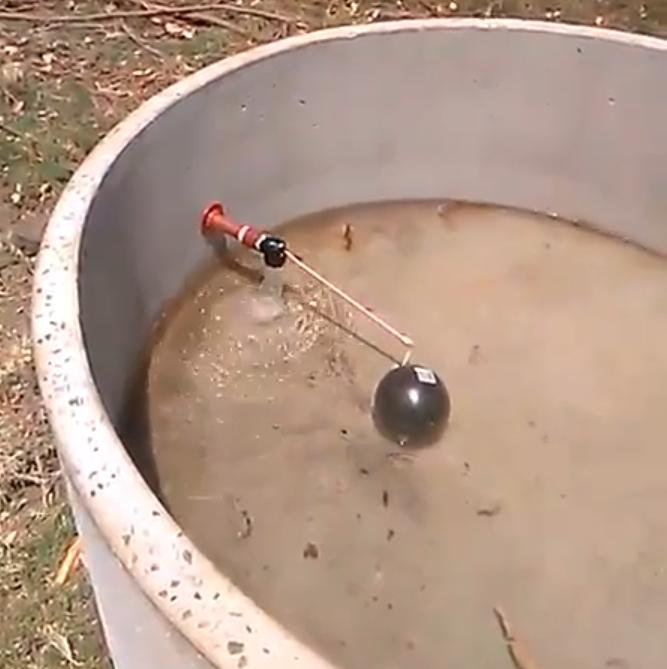
10. Hydrants
The hydrant is the place where the portable drinker should be connected. There are several options when choosing which one to install on the network, however, due to their practicality and ease of replacement, quick-coupling hydrants like the ones in the following image are usually the best suited. A key detail is that it must be protected with a camera when the pipe is buried or against a pole if the pipe is on the surface.


11. Shut-off valves
The system that is decided to be installed must include various shut-off valves, which make it possible to: divert the water to sectors, prioritizing the active places over those that are not, and at the same time carry out repairs without having to shut down the entire operation of the system. The keys must be protected and easy to locate (under the electrics and at the beginning of branches) and if they are in the middle of a line, georeferencing is of great help.
12. Pumping
There are several alternatives when selecting pumps. The electric pump is the most practical and economical option, however there are places where there is no electric current and, for these to work, you have to take it. For these cases, the solar pump becomes a viable option due to its versatility in terms of flow rate and height that it can lift. They can also work fully automatically requiring little or no maintenance.
It should be noted that in terms of pumping, whether solar or electric, there are an immensity of options, so it is vital to analyze case by case which one is best suited.
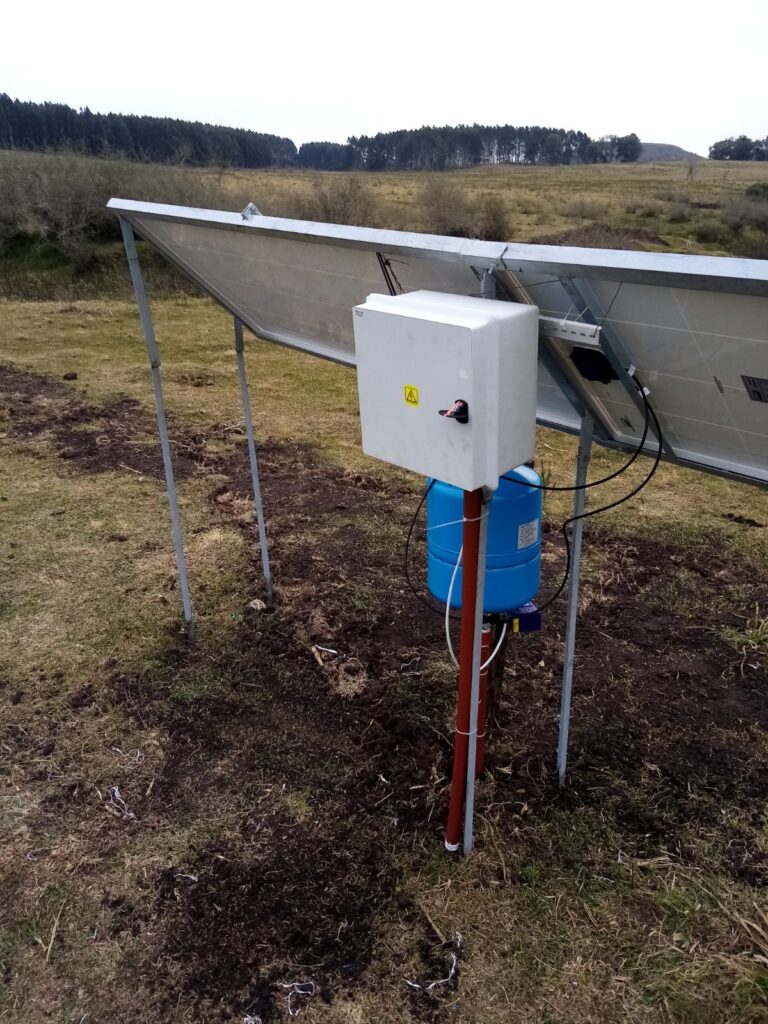
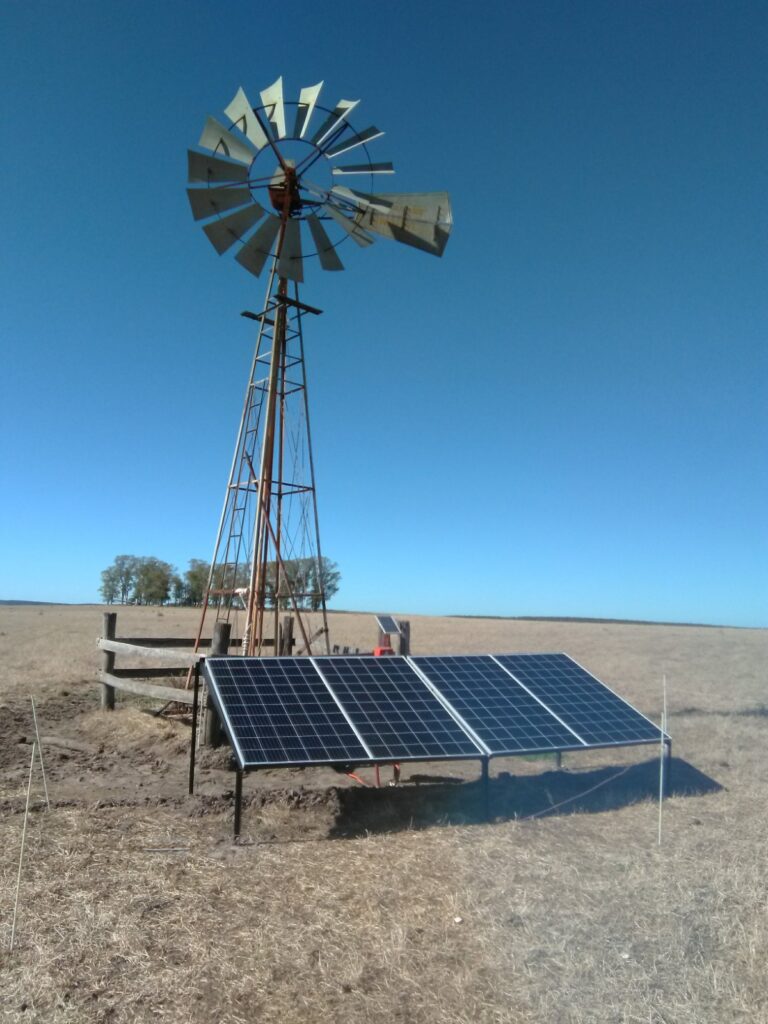
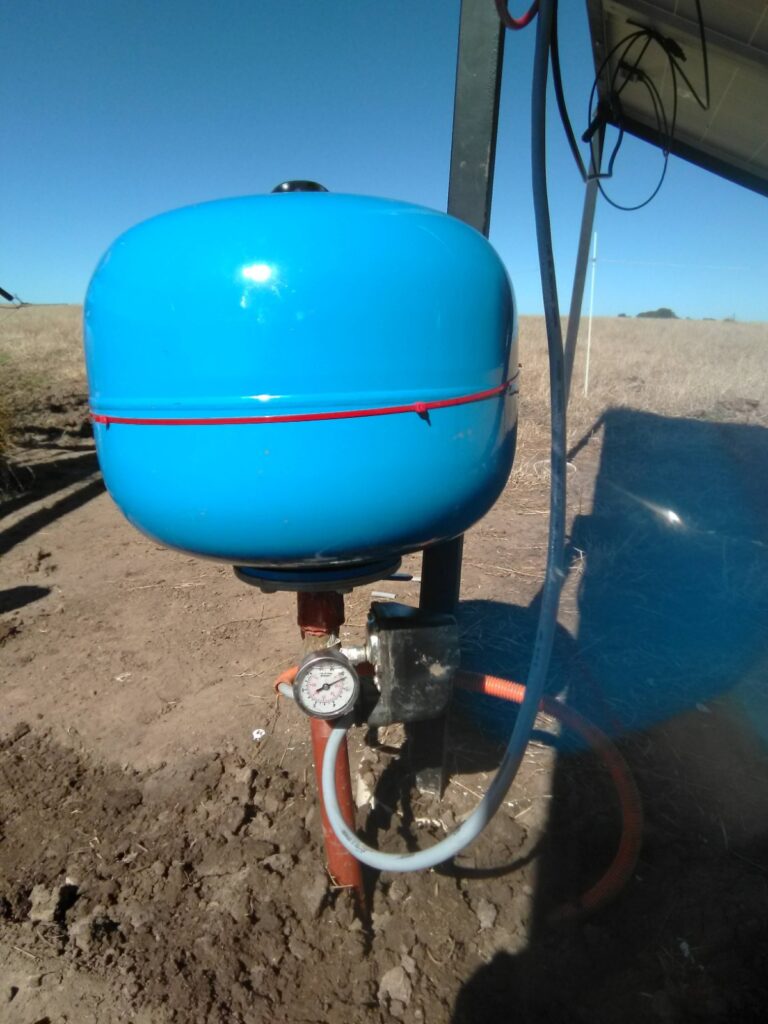
For the sizing of the pump it is necessary to take into account some aspects:
- Size of the herd, taking into account point 2, where the daily consumption of the animal was highlighted.
- Place where the pump is installed, considering that if it is a well, the flow rate supplied should not be exceeded.
- Height of the water source. If it is a well, dynamic level and if it is a ravine, stream or cutwater, height of the point from which water is taken.
- Reserve tank height.
- Distance between water source and reserve.
13. Use existing facilities
From PRV Uruguay, we promote the reuse of pipes, drinking fountains or tanks that are on the property.
Many times, water sources such as ravines or streams are underestimated and they can have a great participation in the system. It is important to be careful when using it, for example, by placing cut-off sensors in the pump, in case there is a risk that the ravine will lower its level, or ensuring that the pump is placed in a deep and protected place. This will allow avoiding large investments such as wells in situations that are not required.

Finally, in the following link you can find the virtual talk on "Water on the plot for US$ 100/ha" where several alternatives are shown that make the water system economical.
On behalf of the PRV Uruguay team, it remains to make ourselves available to collaborate with any project that is being carried out, whether it is advising, as suppliers of supplies or installing.
Are you thinking of making the water network for your establishment? Contact us and get your quote for free.
Ing. Agr. Joaquín Santana – (+598) 92 474 758
Ing. Agr. Alejandro San Román – (+598) 99 299 589
Ing. Agr. Oscar Sosa – (+598) 98 768 917
